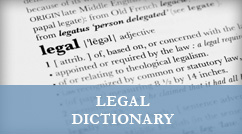Immediate Crash Investigation
Using a combination of information from government sources and large news organizations, David W. Singer & Associates immediately investigates all the events and circumstances surrounding a major aviation accident. Depending on the accident, our investigation could include news surrounding the incident, the accident record of a particular aircraft, airline, or airport, detailed weather conditions at the time of the accident, or past fines or other sanctions imposed on the subject airline. While this information in no way substitutes for a detailed analysis of an accident by trained investigators and analysts, it can be substantially better than what is currently offered by most news organizations in the wake of an accident. The following kinds of information can be accessed quickly after an accident:
Accident Details
Immediately after an accident, there may be one or more news sites with details of the circumstances of the accident. For an accident in any part of the world, CNN is a good starting point. If the accident is in the U.S., involves a U.S. carrier, or has substantial numbers of Americans on board, other useful sites include:
All of these sites offer immediate details about the accident such as the airline, aircraft, number of passengers and crew, casualty estimates, weather conditions, and damage or casualties outside of the aircraft. The Web sites of newspapers or television stations in the vicinity of an accident may also have information that is not available on the larger media sites. One way to locate these sites is to use one or more search engines to identify the newspaper, radio, or television station Web sites from the area of the accident. If the accident was in the U.S. or involved an aircraft registered in the U.S., the FAA would be able to provide additional details about the aircraft and the event the first working day after the accident. The FAA provides preliminary information on the last ten days of accidents and incidents. This source provides basic data such as the number of occupants, the number of deaths, the number and severity of injuries, aircraft registration number, and a brief description of the accident or incident. The data from this site can be used to search U.S. government databases for past events involving the same aircraft model, the particular aircraft, or the same airport. If weather may have been a factor, review the following:
- Accuweather
- The National Center for Atmospheric Research
- The Weather Channel
- The USA Today
- The Weather Underground
Historical Data
Immediately after an accident in the U.S., the first two places to look are the NTSB database and the FAA incident database. The Web site of the FAA Office of Aviation Safety contains links to both of these databases from its home page at www.nasdac.faa.gov. The NTSB database goes back to 1983 and the FAA database goes back to 1978. The combination of the NTSB and FAA databases would provide a comprehensive history of the record of U.S. airlines or of aircraft registered in the U.S. for accidents and incidents since 1983. More general information about U.S. air carrier operations can be found in annual report FAA Statistical Handbook of Aviation. This report covers a broad array of U.S. aviation information and includes data on the FAA, capacity and activity in the U.S. airspace system, airports, airport activity, civil air carriers, and the civil air carrier fleet. In addition to the records in the NTSB and FAA databases, you can also use the registration number to find out about the owner of an aircraft involved in an incident or accident. There are two options, one is to download the database of the FAA Civil Aviation Registry and search it using a spreadsheet or database program. A more convenient option is to use the registration database at www.landings.com. Once you know the registered owner, you can return to the NTSB and FAA search forms to find out if that owner had been involved in other accidents or incidents. Although these database offer a convenient way to access critical information, keep in mind that they do not represent the official record for an aircraft. If you need something more authoritative, contact the FAA, NTSB, or another relevant authority.
Related Details
Additional information about an accident or about the aircraft or airline involved in an accident may be found in news releases or official statements from the Web sites for the aircraft manufacturer, the airline, the investigating authority (for U.S. accidents this would be the NTSB), or the emergency services organizations in the jurisdiction where the event took place. The Web sites www.airsafe.com and Aviation Safety Network traditionally have a short synopsis of the event and details about the aircraft or the airline.
Related Content
In all matters involving personal injury it is essential that measures be taken promptly to preserve evidence, investigate the accident in question, and file a lawsuit prior to the deadline imposed by the Statute of Limitations. If you or a loved one is a victim of personal injuries, call David W. Singer & Associates now at 1.800.ASK.FREE or submit a simple Case Review Form. The initial consultation is free of charge, and if we agree to accept your case, we will work on a Contingent Fee basis, which means we get paid for our services only if there is a monetary award or recovery of funds. Don’t delay! You may have a valid claim and be entitled to compensation for your injuries, but a lawsuit must be filed before the statute of limitations expires. The above is not legal advice. That can only come from a qualified attorney who is familiar with all the facts and circumstances of a particular, specific case and the relevant law. See Terms of Use.





